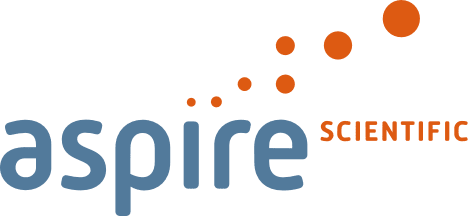The 20th Annual Meeting of the International Society for Medical Publication Professionals (ISMPP) took place once again in Washington, DC, from 29 April – 1 May with the theme ‘Storytelling: Its Art and Power’. Incorporating stories into medical publications can clarify complex ideas, build empathy, and establish trust, ultimately dispelling stigmas and misinformation. Over 700 attendees discovered the power of storytelling to unlock greater understanding in medical communications.
A summary of the second day of the meeting is provided below to benefit those who were unable to attend the meeting, and as a timely reminder of the key topics covered for those who did.
Summaries of Day 3
Publishing reimagined and the evolution of disseminating medical research
KEY TAKEAWAY
- With the transformative changes in journal publishing (including the move to digital formats and open access publishing), there is a need to reimagine publications while taking care to maintain quality and accurately assess their impact.
Jonathan Patience (Taylor & Francis Group), Mark Riotto (TheResearchPost), Stephen Towers (Healthcare Consultancy Group), and Rebecca Rozich (ICON) opened Day 3 by engaging in a topical interactive session about current trends in the publication of medical research and their impact on the future of publishing.
Changes in journal publishing
In the first presentation, Patience reviewed the dramatic changes in medical journal publishing seen over the past 25 years, highlighting the:
- shift from print to electronic publishing
- declaration of open access mandates from funding organisations
- proliferation of open access journals.
While these changes have undoubtably improved accessibility and knowledge dissemination, some challenges have arisen, such as information overload, potential erosion in the quality of submissions, strain on the peer review system, threats from preprint platforms, and a rise in predatory journals. Proposals to overcome these challenges include:
- use of new formats to disseminate information to a time-poor audience
- approaches to maintain publication integrity and quality peer review
- changes to publishing revenue models to improve accessibility and speed of publication
- application of precise metrics (eg, using artificial intelligence [AI]) to focus on reaching the ‘right’ audience.
Publishing reimagined
In a thought-provoking presentation, Riotto looked at how the drive for accessibility is challenging the traditional model of publishing. He first questioned whether long-form primary manuscripts may be outdated and suggested that short forms (extenders, visual formats, etc.) may soon be reimagined as the primary publication. However, long-form papers will always be needed for scientific validation.
To expedite publication and provide a solution to funder mandates for better accessibility, Riotto went on to propose transformative agreements for new publication models, including:
- contracts with publishers that seek to shift payments away from a subscription model and towards open access publishing
- payment bundles that include both reading (subscription) and publishing (open access) under a single contract (‘read and publish’).
Maintaining quality and integrity
Subsequently, Patience deliberated how publishers can act to maintain quality and integrity in the face of increasing volumes of submissions. He proposed several responses to drivers for change:
| Driver | Future response |
| Paper mills and unethical publication practices | More validation checks, increased editorial resource, author education, use of detection technology |
| AI | Education on responsible use, better AI detection |
| Predatory publishers | More specific journal metrics, educational campaigns, collaborative relationships with publishers |
| Rise in special issues | Use of guest advisors instead of guest editors, improved editorial processes, involvement of the editor-in-chief |
| Need for faster publication | Evolution of preprints, balance versus quality |
Patience indicated that, while it remains the ‘gold standard’, peer review may be improved through measures such as reviewer training, reviewer pool expansion, reward schemes, increased editorial resource, pre-screening of manuscripts, new models of review (eg, open peer review), and ethics education.
Peer review may be improved through measures such as reviewer training, reviewer pool expansion, reward schemes, increased editorial resource, pre-screening of manuscripts, new models of review, and ethics education.
Improving metrics
In the final presentation of this session, Towers highlighted that article-level metrics have revolutionised our ability to measure the attention of, and real-time impact of publications on, a broad audience, but several challenges remain, including how to:
- determine the ‘real’ impact of publications — solutions might include use of more granular metrics and introduction of AI- or natural language processing-based text analysis to assess if a citation supports the original article
- deal with a lack of transparency, standardisation, and consistency in publication metrics scoring — solutions might include application of the EMPIRE Index and multi-stakeholder collaboration to agree on universal standards and definitions
- prevent self-promotion via manipulation of publication metrics — solutions might include use of AI to detect manipulation and reducing institutional drivers of the ‘pressure to publish’.
What do we see as the innovations over the next 5 or 10 years?
Considering this question in an interactive discussion, the panellists stated that they expect the following innovations in publishing in the near future:
- greater interactivity – expanded use of visual and digital publications, and extenders
- increased collaboration among stakeholders over publishing models
- growth of open data initiatives
- consolidation of business models, including expansion of journal ‘families’
- better use of storytelling
- journals taking a more curatorial role over publications
- more initiatives to counter ‘bad actors’ to improve trust in publications.
Metrics on the horizon: how do we measure success of publications in a rapidly evolving technological world?
KEY TAKEAWAY
- Employing AI technologies and a data-driven approach to publication insight generation can help to broaden the reach and impact of medical publications.
The theme in this parallel session was the evolving landscape of metrics for measuring success in medical publications. Tomas Rees (Oxford PharmaGenesis), Jim Streeter (Envision Pharma Group), and Kimberly Della Penna (Johnson & Johnson) explored different methods for evaluating success and discussed the potential for new technologies to impact on publication planning strategies.
Rees began by outlining the array of different metrics that have found use in medical publications. Reflecting on over a decade’s experience with publication metrics, he explained how different metrics can measure different aspects of engagement with a publication, but that some metrics were more valuable than others. For example, citations from credible sources are typically given more credence than social media shares. Furthermore, while different metrics can offer different types of insight, not all metrics are directly actionable. Rather than being used as performance targets, the purpose of publication metrics is to assess alignment between a publication and its overall goal.
In the next part of the session, Streeter elaborated on how the massive amount of data being collected on publications can be leveraged to inform decision making and improve the impact of publications. The emergence of AI as a tool will offer opportunities to analyse these ‘big data’ to generate meaningful publication insights. However, Streeter saw existing AI models as a starting point on which further bespoke functionality would need to be built to interpret and utilise data for specific use cases.
“The layers that go on top of these AI models are going to become very important so that we can get the right data at the right time.” – Jim Streeter
Real-time data was another concept that Streeter saw as crucial to understanding how people engage with publications. For example, understanding how long someone spends viewing a specific graph or section of text could be used to gauge their comprehension of the publication. Analysis in real-time could also allow content to be adapted more quickly and targeted or re-aligned to suit a specific type of user or a specific demographic. Acknowledging that there were privacy considerations involved with collecting and analysing information at a patient or healthcare professional level, Streeter described the importance of understanding and defining what constitutes an ethical approach for this type of insight generation.
Emphasising the need to incorporate data science and AI into everyday workflows, Streeter summarised that we are ready to start using these data-driven approaches to make better decisions about how we create, distribute, and measure the impact of our publications.
“We hear about AI, the amount of data that’s coming and really the value it’s going to bring so that we can make better decisions with our publications.” – Jim Streeter
End-to-end patient involvement
KEY TAKEAWAY
- Patient involvement in the development of medical treatments is an exciting new frontier that offers excellent value for all stakeholders but is dependent on strict guidance and a clear understanding of the roles and responsibilities of patients.
In this parallel session, Jasmine Malone (Open Health) introduced a varied panel of speakers, Robert Greene (patient advocate, HungerNdThirst Foundation), Behtash Bahador (CISCRP), and Hamish McDougall (SAGE Publications), to discuss key elements of end-to-end patient involvement in clinical development.
The importance of end-to-end involvement from the patient’s perspective
Greene provided his personal perspective on the importance of patient involvement throughout the drug development process and treatment landscapes. He began by reminding the audience that patients are individuals, which means that one patient is not necessarily representative of the full population. Despite this, Greene explained that patients provide unique insights and experiences that can enhance the relevance and reach of research and publications. Ensuring information is accessible, understandable, and reflective of real-world experience is the best way to build transparency and trust; provision of fair and ethical compensation when engaging patients was also noted as a critical factor.
Several ways to increase patient involvement were highlighted, such as training programmes and communications strategies created with patient involvement as a core starting element, advisory panels at the patient or patient advocacy group level, and encouraging collaborations between patients and groups such as pharma companies and medical publishers for the co-creation of materials.
Ensuring information is accessible, understandable, and reflective of real-world experience is the best way to build transparency and trust.
Demonstrating the value of end-to-end patient involvement
Bahador opened his presentation by defining patient involvement as “collaboration with patients in their communities to understand and address their needs across all stages of medicinal product development”. He showed the EUPATI model of patient involvement, which describes opportunities for working with patients beginning at the early stages of research design all the way through to the communication of trial results post-approval. To assist with this, there are established standards, frameworks, and guidance for patient engagement in research and development processes. The development of clinical trial lay summaries was held up as an example of where patient input is crucial in determining what information from clinical study reports patients are interested in and how to effectively communicate trial results to them. Bahador went on to explain how patient engagement has led to improved study cycle times, better retention in studies, increased patient satisfaction and, ultimately, better health outcomes for patients. Regulatory bodies like the US Food and Drug Administration (FDA) and the UK’s National Health Service (NHS) are also now emphasising the importance of patient involvement in setting research priorities, identifying key endpoints, and designing trials. Community engagement initiatives such as developing culturally relevant resources, conducting surveys to gather feedback, and mobile education initiatives aimed at increasing awareness and understanding of clinical research were also highlighted as important tools for increasing patient involvement.
Patient engagement has led to improved study cycle times, better retention in studies, increased patient satisfaction and, ultimately, better health outcomes for patients.
Opportunities and best practices for patient involvement in publications
The final presentation in the session was given by McDougall, who provided a publisher’s perspective on best practices in patient involvement. He offered several insights, beginning with the observation that because patient involvement in publications offers many advantages for publishers, it is crucial they do not lose sight of patients’ diverse experiences and challenges during the process. Currently, there are 2 primary roles for patients in the publications landscape: peer reviewers and authors. Patients can contribute to peer review by ensuring plain language and accessibility, especially for language-oriented publications. Patients can also be involved as authors, but it is essential they fit authorship criteria and are provided with adequate guidance and support. Patient perspective articles or journals provide valuable qualitative information, particularly in areas with limited quantitative data; however, McDougall reiterated that guidance is needed to ensure patients understand their responsibilities, can avoid ethical issues, and feel empowered to be involved throughout the process. Other best practice approaches for involving patients include recognising diverse levels of experience and providing fair compensation.
Because patient involvement in publications offers many advantages for publishers, it is crucial they do not lose sight of patients’ diverse experiences and challenges during the process.
Guided poster tour
Plain Language Summaries was the theme for the guided poster tour on Day 3, with 4 featured posters:
- AI’s might vs human prowess in crafting plain language summaries
- Cracking the code: how discoverable are plain language summaries?
- Readability of plain language summaries (PLS): are they getting better?
- Standalone plain language summaries of publications: a 5-year trend analysis
Keynote: Generative AI: practical strategies to increase productivity
KEY TAKEAWAY
- Generative AI (GenAI) is changing the way we work and can dramatically increase productivity, but its effective adoption requires behavioural change.
Conor Grennan (NYU Stern School of Business), who delivered an interactive keynote session on GenAI, started by posing a question: given that the GenAI tool ChatGPT is accessible and has no learning curve, why is it difficult to master? The answer, he suggests, is that it requires behavioural change.
What is ChatGPT replacing?
ChatGPT reached 1 million users 3 days following its launch, much faster than streaming services such as Netflix and Spotify. However, Grennan explained that while it is obvious to our brains that Netflix replaces videos and Spotify replaces CDs, it is unclear what ChatGPT is replacing. He highlighted the need to “break down the paradigm that ChatGPT is the same as a search engine”, assumed because its interface resembles that of Google search.
It is obvious to our brains that Netflix replaces videos and Spotify replaces CDs; it is unclear what ChatGPT is replacing.
Focus on needs, not use cases
Grennan pointed out that the use of AI tools is already widespread (take spellcheckers, for example), but they are running in the background. He likened the potential of GenAI to that of electricity: although electricity is an integral part of everyday modern life, it is easiest to explain its benefits using specific examples, such as lightbulbs. So instead of considering use cases for GenAI, Grennan stressed the importance of considering what needs exist.
Perfect prompting
“Forget prompt engineering – just talk to ChatGPT like a human!” This was Grennan’s top tip at the start of his live demonstration of how ChatGPT can help with tasks such as:
- explaining something in different ways for different audiences, using the example prompt: “Can you explain immunotherapy to three different people, giving me a short script for each – the three people are: an MIT PhD in science, an elderly farmer and a 10-year-old obsessed with monster trucks”
- drafting emails
- coming up with creative ways to introduce new employees to company culture
- strategising (eg, identifying the steps involved in starting a new company).
“Forget prompt engineering – just talk to ChatGPT like a human!” – Conor Grennan
Solving the biggest problems
Grennan explained that while ChatGPT’s first answer to a question may be short and simple, further prompting can provide exactly the right information needed. Therefore, users need to go deeper, since continuing to ask about individual details will lead to better answers. To mitigate against AI ‘hallucinations’, Grennan advised double checking ChatGPT outputs, particularly when precision was important.
Double check everything if you need precision – ChatGPT is better as a reasoning tool than a knowledge tool.
Written as part of a Media Partnership between ISMPP and The Publication Plan, by Aspire Scientific, an independent medical writing agency led by experienced editorial team members and dedicated, industry experts who will deliver medical writing and communications excellence.






